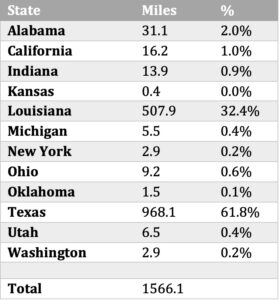New energy technologies that most people haven’t even heard of are on the cusp of transforming their lives. This 21st-century energy expansion, like the oil and gas revolution that reshaped the 20th century, should start in Texas.
Consider hydrogen-based energy. Right now, the U.S. Department of Energy is sifting through thousands of pages of information, deciding where to spend $8 billion that was allocated in last year’s bipartisan infrastructure law for regional hydrogen hubs. Texas should be high on the list: The state holds more than half of the nation’s — and roughly a third of the world’s — existing hydrogen pipelines.
Our state’s wealth of existing infrastructure demonstrates that Texas should be ground zero for advanced energy research.
“Texas has a key role to play in delivering more clean electricity to people and employers — not just from hydrogen, but also from technologies and innovations that will drive the 21st century energy expansion.”
A new study by Rice University’s Baker Institute, supported by nonpartisan think-tank Texas 2036, demonstrates that Texas is well-positioned to sustain and solidify its role as an energy capital of the world — provided the state leads the energy expansion by adopting smart policies that support the growth of emerging industries and the transition of existing ones through carbon capture technologies.

“An enviable range of unique geographical and geological features make Texas fertile ground for a boom in renewable and clean energy production — one we already see unfolding across much of the state.”
Some features are well-known and obvious. Texas has ample wide-open spaces where the wind blows and the sun shines. These have already helped make Texas the nation’s leader in wind power generation, and they could make the state the solar leader as soon as this year.
Other features lie below the surface, but they could be just as important. Besides hydrogen pipelines, Texas — southeast Texas, especially — also has underground saline formations that pair well with existing energy infrastructure and dense industrial development. This makes the Gulf Coast an ideal hub for carbon capture and storage and hydrogen development.
 Crucially, the federal government is in the process of supporting the creation of hydrogen hubs, international investors are putting hundreds of billions of dollars into this technology, and global demand is expected to surge in the coming decades.
Crucially, the federal government is in the process of supporting the creation of hydrogen hubs, international investors are putting hundreds of billions of dollars into this technology, and global demand is expected to surge in the coming decades.
Our report also shows that geothermal energy production could provide a transformative new source of energy to Texans. The so-called Texas Triangle — the zone containing the Dallas, Houston, San Antonio, and Austin metropolitan areas and a significant majority of the state’s population — also happens to be a promising area for the development of geothermal energy. That would provide needed power to most Texans in a way that requires relatively little investment in new transmission infrastructure.

In addition to its natural resources and extensive infrastructure, Texas also maintains a highly trained workforce with the skills and specialties needed to propel emergent energy industries.
The state’s specialized workforce directly reflects decades of investment in education—especially higher education. Texas is home to several leading research institutions that equip young Texans to innovate and explore the energy realm. As our report shows, support for universities and their research programs is key to the state’s long-term energy strategy.
State government’s deep and wide experience with oil and gas policy also leaves us well-positioned to develop the legal and regulatory scaffolding to support emergent energy industries. Property rights considerations, environmental regulations, permitting systems, public investment plans and fiscal policy have all played significant roles in balancing the interests of the energy industry with those of affected constituents.
By extending this 20th-century framework of policies and practices to reflect 21st century needs, the state can support the development of new and alternative energy generation in ways that protect the overall economy and the rights of individual Texans.
But Texas also faces key questions about whether we’ll fulfill this potential. Many renewable energy facilities are located in or slated for rural areas far from the state’s population centers; limited transmission infrastructure will prevent resources from feasibly plugging into the state’s electricity grid.
Continued leadership in this area will also, at some point, require investment that brings more homegrown renewable energy to Texas population centers.
Nevertheless, Texas’ abundant natural resources, existing infrastructure, highly skilled workforce and leading research institutions are already aligned in ways that could drive an energy expansion, benefitting people in Texas and beyond for generations to come.
To capitalize on these clear advantages, state policymakers must work with all stakeholders — including industries, institutions and the federal government — to coordinate resources and implement policies that optimize the state’s potential.
If today’s leaders take advantage of existing opportunities and embrace the coming energy expansion, they’ll ensure that future generations of Texans will continue to know their state as the Energy Capital of the World.

Barro is a public finance fellow at Rice University’s Baker Institute for Public Policy, and Diamond is director of the Center for Public Finance at the Baker Institute and the Edward A. and Hermena Hancock Kelly Fellow in Public Finance. Orr is a senior policy advisor at Texas 2036.
